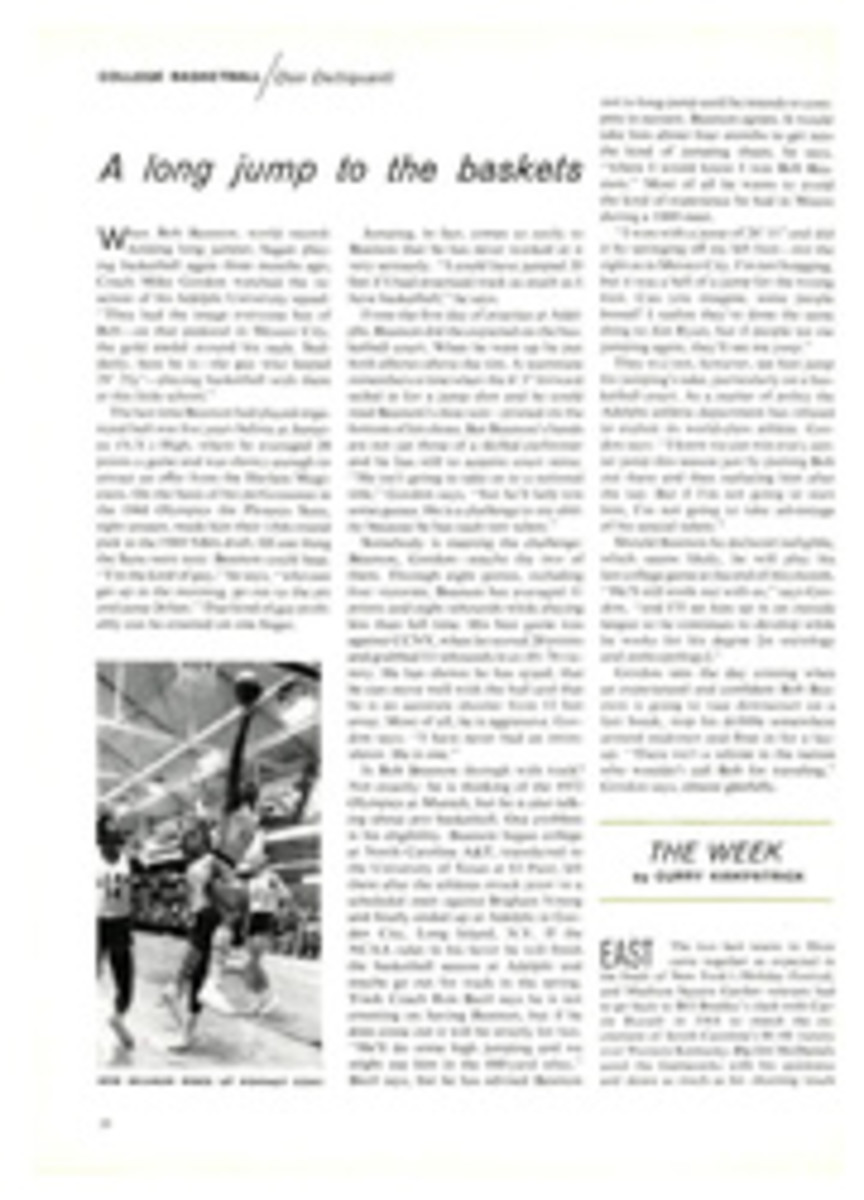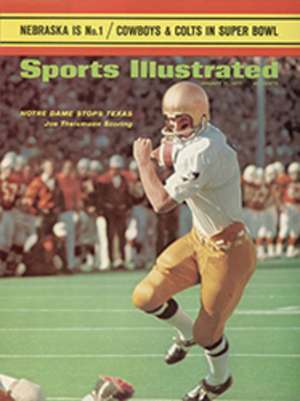
...and a partridge in a palm tree
There was a time when Christmas Day throughout the American countryside was celebrated with hunts. Neighbors would choose up sides and then spread out through the woods and meadows to kill every bird and animal they could find. A robin might be worth two points to a side, a raccoon 10 points, a deer 100 points. By Christmas evening not a sparrow would twitter, and it would be Silent Night indeed.
Around the turn of the century some New Yorkers decided this wasn't very civilized sport. Why not, they suggested, choose up sides and count, not kill, the local birds. For 71 years now a bird census has been taken each Christmas, and for bird watchers it is as much a part of the holiday season as are carols, plum pudding and mistletoe. More than 15,000 people, from the frozen tundra of Nome, Alaska to Manhattan's West 72nd Street, find sport during Christmas week counting everything from common starlings to the black-eared bushtit. Only pigeons are deemed too lowly to consider. On foot, skis, snowshoes, horseback, in cars, canoes, snowmobiles, jeeps, dune buggies, sleighs, airboats, planes and bicycles, groups of enthusiasts search 15-mile areas, noting the numbers and kinds of birds sighted. Everything is important, even the cattle egret sitting in an Orlando, Fla. parking lot and the 52 red-winged blackbirds in a West Texas cow pen. Of course, not every bird is counted, but the annual survey provides significant information about migrations.
This brand of bird watching inspires keen competition, as well, and annually there is a scramble to be the No. 1 bird-finding team in the country. "We deplore the count being turned into some kind of game," an Audubon official declares, but Ara Parseghian has nothing on the men who recruit expert bird watchers for their teams.
One such perennial power is the Cocoa, Fla. group, which has finished on top in 12 of the last 15 years. Last week as count day neared it was drawing in specialists from California, Michigan, Ohio, Tennessee, North Carolina and Illinois. "We're very selective," says Allan D. Cruickshank, who heads the Cocoa team. "I turn down 100 people a year. You have to. If I had too many novices, I would be slowed up. It would be like a quarterback stopping to explain a play. This can't be a social party."
Cruickshank claims the competition is not important, that it should never be a major factor because it can upset the compilation. But with a smile he says, "Human nature being what it is, competition creeps into the picture. I organize the count like a military campaign. My wife doesn't like me to use that description, because she is a Quaker." There have been years when Cruickshank used walkie-talkies to monitor the progress of his platoons combing the Cocoa area but he dispensed with them on the count last week.
The prize of the Cocoa region was a rare bar-tailed godwit that had appeared on the local mud flats in mid-October. Only six of this species have ever been found in the U.S. After the discovery of the godwit around Port Canaveral, ornithologists from 27 states flew to Cocoa to see it.
Cruickshank had his 86 bird counters breakfasting at a diner by 5 a.m. He had been up since 3:45 listening for night heron and owls. In parties of four and five the counters set off in the darkness. At this point one could only count birds by hearing them and knowing their call. Under a full sky of stars Cruickshank led his small group down a road through marshlands. Every several yards the men would throw stones into the cattails and mangroves. Occasionally a rock would land near a blue heron and it would cry in outrage—awk (one blue heron), awk (two blue heron), awk (three blue heron)—and so it would go.
Slowly the Big Dipper disappeared and the sky paled into morning. The whish of pelican wings was overhead, 10, 20, 30. With telescopes and binoculars Cruickshank's group peered out at islands and ferreted through cabbage palms and live-oak groves. "Allan, we need help bad," called a Florida fish and game department official who had spied a bird he could not identify. Cruickshank hastened to the spot and announced, "Black and white warbler."
Elsewhere others in the Cocoa team were enticing birds out of impenetrable places with recorded birdsongs. "I always take my record player," explained Mrs. Lee Cantwell, who with her husband was going on five Christmas bird counts in 10 days. (Areas nowadays often choose different dates to accommodate enthusiasts like Mrs. Cantwell.)
There are hazards in bird watching, among them rattlesnakes, cottonmouths and an occasional inhospitable property owner. At midday four Cocoa bird watchers were seen crouching and running like soldiers advancing under fire through a backyard. For a long time a barn owl had nested in an abandoned water tower there, and each year on count day the Cocoa bird watchers would skirmish with the lady who owned the land. This year their presence went undetected, but the birders found the water tower sealed and no owl.
A whip of wind turned the afternoon dull and gray. Across dikes and ranch-land sandhill cranes were pursued, and finally high-powered binoculars picked them up nearly a mile away dancing in the high weeds.
It is the number of species found, rather than the total number of birds, that decides the No. 1 team. When it gathered in the evening at the local Presbyterian church, the Cocoa group found its members had seen 205 different types of birds—one less than its record—including the bar-tailed godwit. There were a few disappointments. A sly bird watcher who had fed the one ring-necked pheasant in Cocoa daily just to keep it around for count day could not find the cock. Cruickshank scolded his team for other misses. But, in all, he appeared pleased with the results. "Without any question, we have the highest count east of the Mississippi," he declared. He worried that the San Diego bird watchers might have beaten him, and he said there was a real threat from a group in Free-port, Texas that "is ganging up on us."
In two weeks the summaries will be in. Maybe Texas will be No. 1 in something after all.

